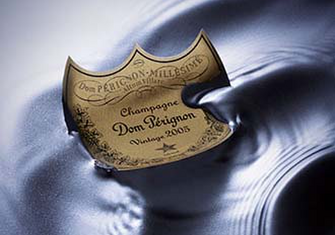
Liv-ex’s latest data on fine wine regional market share illustrates the evolving composition of the trade in the secondary market in the last ten years and in particular we look at which regions have seen demand in the first quarter of 2020.
In the Liv-ex figures published at the end of March 2020, we see that Bordeaux’s 95% grip on market share on Liv-ex in 2010 reduced to an average record low of 50.5% in 2020. We need to understand the context of this and remember that the number of fine wines now traded on Liv-ex from the various regions has grown extraordinarily in the last decade and naturally this has diluted Bordeaux’s majority. The table shows the latest picture on regional market share.
Regional Market Share on Liv-ex:
| REGION | TRADE SHARE 20 – 26 MARCH 2020 | FEBRUARY MARKET SHARE |
| Bordeaux | 45.5% | 45.3% |
| Burgundy | 9.0% | 20.3% |
| Champagne | 18.3% | 8.8% |
| Italy | 17.5% | 13.0% |
| USA | 4.4% | 4.6% |
| Others | 3.7% | 5.2% |
| Rhone | 1.6% | 2.8% |
Source: Liv-ex.com 31st March 2020
The iconic First Growth and Left bank ‘Big 9’ Bordeaux wines; Haut Brion, Lafite Rothschild, Latour, Margaux, Mouton Rothschild, Le Pin, Petrus, Angelus, Ausone, Cheval Blanc and Pavie, are ‘blue-chip’ fine wine investments with iconic status that stands the test of time. Twenty years ago they were probably the only globally recognisable fine wine brands – these wines led the ‘uninformed’ into the market as brand recognition inspired confidence and investor appeal. They are still building block investments for a robust fine wine portfolio and whilst all tick the quality box some are now priced to offer serious value as long term, tangible, stable investments.
Burgundy was the immediate beneficiary of investors seeking quality elsewhere in the broadening market. Top Burgundies are, as a rule, produced in much smaller quantities and this scarcer supply saw prices rise exponentially as demand increased for these wines to achieve record- breaking prices for top brands such as Domaine de la Romanee-Conti in 2018. Liv-ex’s annual Power 100 has reflected Burgundy’s strong influence in the market with the largest number of new entrants in the ranking of the world’s most powerful fine wine brands from the region in the 2019 report.
Last year saw the rise of Tuscany and Champagne as key regions producing in-demand fine wines and this trend has continued into Q1 2020. Champagne is consistently measured by Liv-ex as the most stable price performer on the exchange and we have seen its market share grow significantly since 2018 and the last week of March saw Champagne responsible for 18.3% share of trade on the exchange.
Italy has had an impressive 12 months and part of this has to be put down to the region’s exemption from the US tariffs imposed in October 2019 but also that the top Barolos and Brunellos are enjoying well-deserved recognition and demand. Italy’s average share of of trade on Liv-ex was 9% across 2019, standing at 13% at the end of February and at 17.5% by value in trade during the last week of March 2020. Italy continues to be in the ascendancy.
Top traded wines on Liv-ex week 20 – 26 March, 2020:
| Rank | Wine | Vintage | Region |
| 1 | Moet & Chandon, Dom Perignon | 2008 | Champagne |
| 2 | Louis Roederer, Cristal | 2012 | Champagne |
| 3 | Sassicaia | 2017 | Italy |
| 4 | Louis Roederer, Cristal | 2008 | Champagne |
| 5 | Ornellaia | 2016 | Italy |
Source: Liv-ex.com
Meanwhile the USA wines have also traded well even in the current global environment, Napa Vally icons have driven its regional share to double from an average 5% in 2019 to 10% in 2020 to date. They may well have benefited from Trump’s tariffs particularly for US buyers and unsurprisingly Screaming Eagle and Harlan Estate have led the way.
For more information on diversifying a wine portfolio to reflect market trends and to strengthen overall performance read our Guide to Fine Wine Investment and speak to a member of our expert team on 0203 384 2262.

